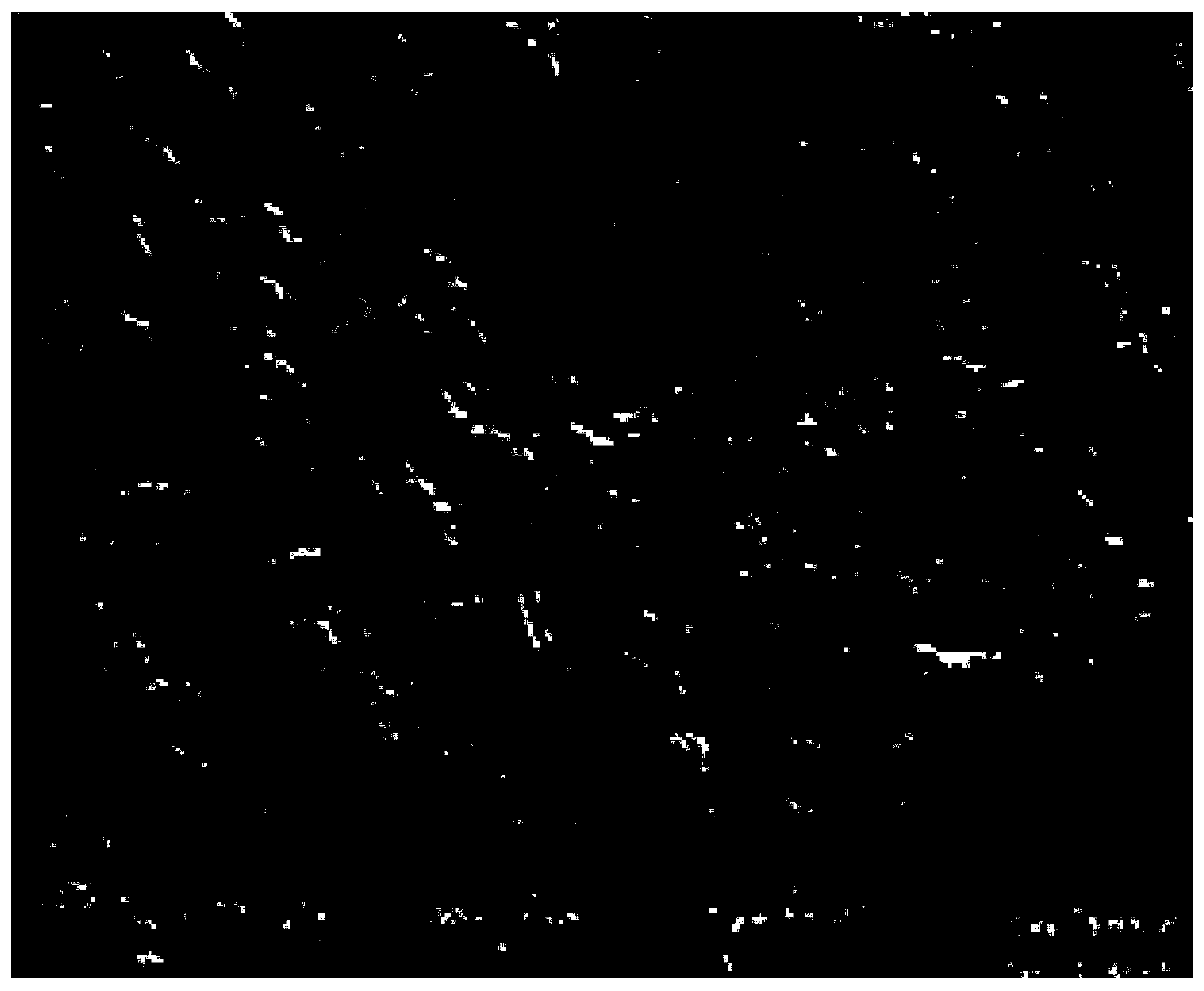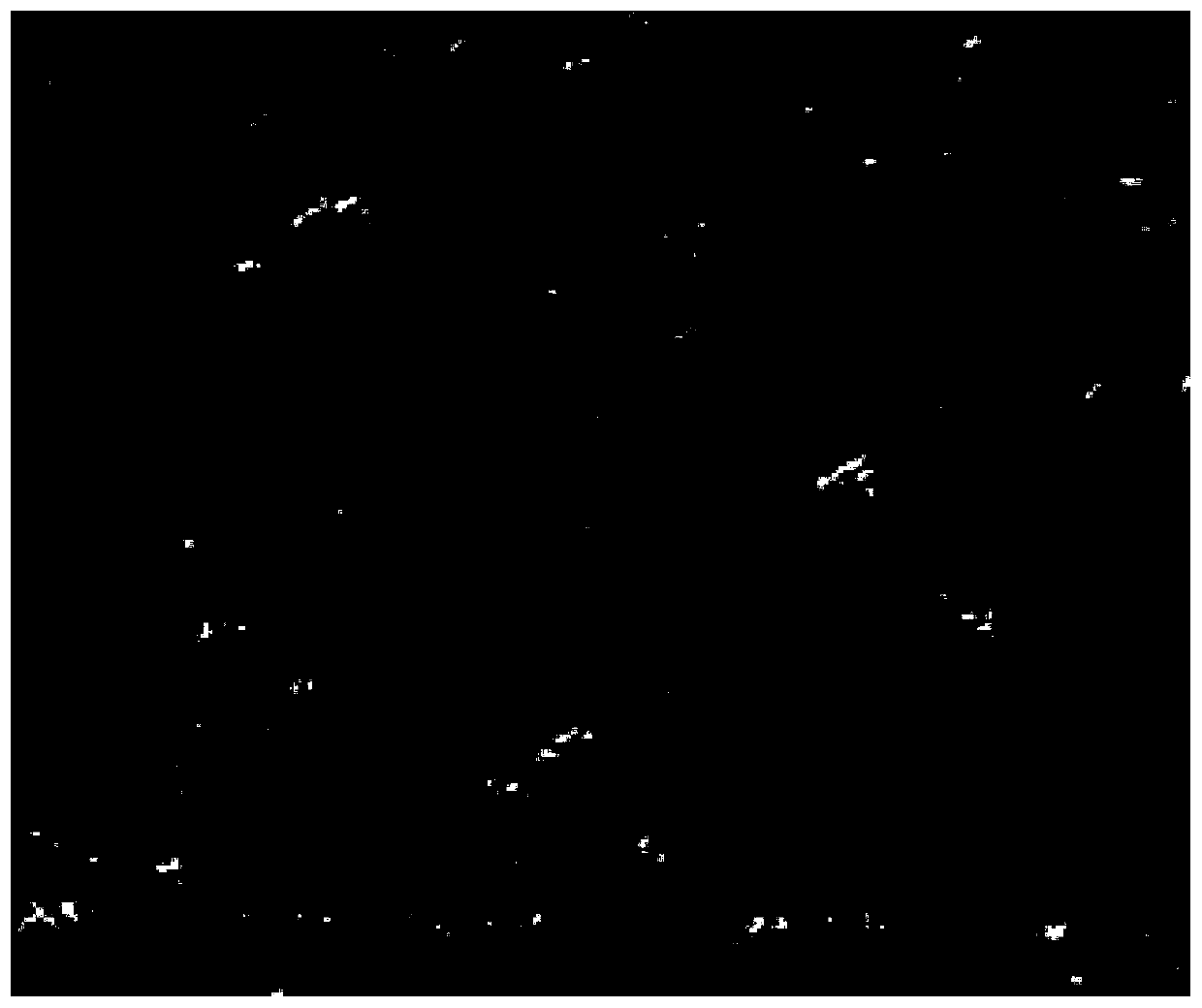A kind of polyoxymethylene/polylactic acid SERS polymer substrate and its preparation method and application
A polymer and polyoxymethylene technology, applied in textiles and papermaking, instruments, analytical materials, etc., can solve the problems of low sensitivity and poor repeatability, and achieve the effect of stable phase structure
- Summary
- Abstract
- Description
- Claims
- Application Information
AI Technical Summary
Problems solved by technology
Method used
Image
Examples
Embodiment 1
[0036] Embodiment 1: Preparation of polyoxymethylene / polylactic acid SERS polymer substrate containing gold nanoparticles:
[0037] (1) Preparation of polyoxymethylene / polylactic acid polymer film by melt blending
[0038] POM and PLLA were weighed in a weight ratio of 50:50, then poured into a Haake mixer, and melted and blended at 190°C. The specific experimental operation is as follows: the raw materials are first mixed at a premixing speed of 20rpm for 2min, and then mixed at a speed of 50rpm for 5min; the blend is taken out and placed on a flat vulcanizer at 190°C. After the sample is fully melted, heat it at 40MPa. Press for 3 minutes; then quickly transfer to a flat vulcanizer at room temperature and cold press for 1 minute at 40 MPa; prepare a sample sheet with a thickness of about 50 μm. The temperature of the sample is controlled by a hot stage, and the film of the above-mentioned sample fingers is rapidly heated to 190°C for 10 minutes to eliminate the thermal hist...
Embodiment 2
[0043] Embodiment 2: Preparation of polyoxymethylene / polylactic acid SERS polymer substrate containing nano-silver:
[0044] (1) Preparation of polyoxymethylene / polylactic acid polymer film by melt blending
[0045] POM and PLLA were weighed in a weight ratio of 70:30, then poured into a Haake mixer, and melted and blended at 190°C. The specific experimental operation is as follows: the raw materials are first mixed at a premixing speed of 20rpm for 2min, and then mixed at a speed of 50rpm for 5min; the blend is taken out and placed on a flat vulcanizer at 190°C. After the sample is fully melted, heat it at 40MPa. Press for 3 minutes; then quickly transfer to a flat vulcanizer at room temperature and cold press for 1 minute at 40 MPa; prepare a sample sheet with a thickness of about 50 μm. The temperature of the sample is controlled by a hot stage, and the film of the above-mentioned sample finger is rapidly heated to 190°C for 10 minutes to eliminate the heat history, and th...
Embodiment 3
[0050] Embodiment 3: Preparation of polyoxymethylene / polylactic acid SERS polymer substrate containing gold nanoparticles:
[0051] (1) Preparation of polyoxymethylene / polylactic acid polymer film by melt blending
[0052] POM and PLLA were weighed in a weight ratio of 50:50, then poured into a Haake mixer, and melted and blended at 190°C. The specific experimental operation is as follows: the raw materials are first mixed at a premixing speed of 20rpm for 2min, and then mixed at a speed of 50rpm for 5min; the blend is taken out and placed on a flat vulcanizer at 190°C. After the sample is fully melted, heat it at 40MPa. Press for 3 minutes; then quickly transfer to a flat vulcanizer at room temperature and cold press for 1 minute at 40 MPa; prepare a sample sheet with a thickness of about 50 μm. The temperature of the sample is controlled by a hot stage, and the film of the above-mentioned sample finger is rapidly heated to 190°C for 10 minutes to eliminate the thermal histo...
PUM
| Property | Measurement | Unit |
|---|---|---|
| size | aaaaa | aaaaa |
| pore size | aaaaa | aaaaa |
| size | aaaaa | aaaaa |
Abstract
Description
Claims
Application Information
 Login to View More
Login to View More - R&D
- Intellectual Property
- Life Sciences
- Materials
- Tech Scout
- Unparalleled Data Quality
- Higher Quality Content
- 60% Fewer Hallucinations
Browse by: Latest US Patents, China's latest patents, Technical Efficacy Thesaurus, Application Domain, Technology Topic, Popular Technical Reports.
© 2025 PatSnap. All rights reserved.Legal|Privacy policy|Modern Slavery Act Transparency Statement|Sitemap|About US| Contact US: help@patsnap.com



